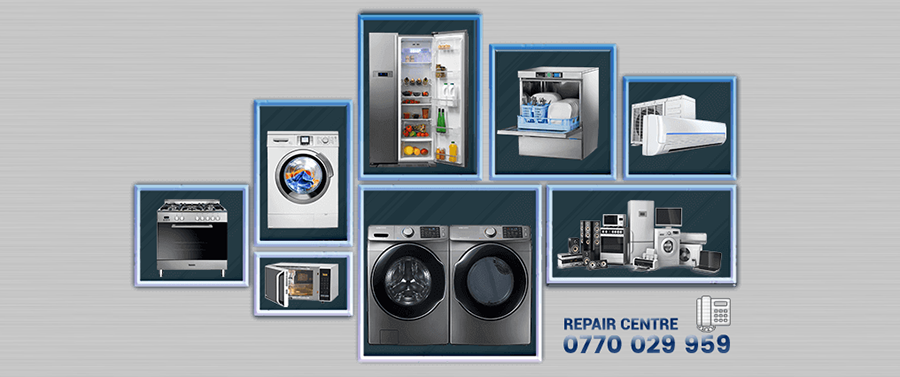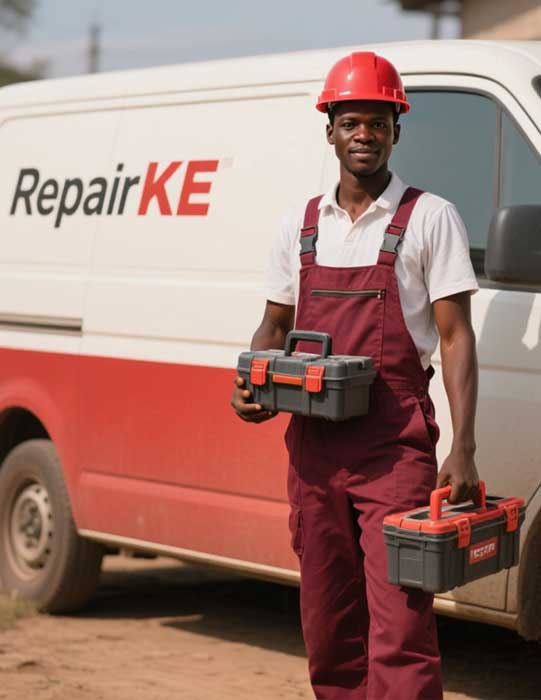
Fixing Front Load Washing Machines for all common problems and faults
By RepairKE
Front load washing machines have become increasingly popular in Kenyan households due to their efficiency, water-saving capabilities, and gentle treatment of clothes. However, like all appliances, they can develop various problems that disrupt your laundry routine. Understanding common faults and their solutions can help you decide when to attempt a simple fix yourself or when to call a professional technician. This comprehensive guide explores the most frequent issues affecting front load washing machines and practical approaches to resolving them.
Understanding Front Load Washing Machine Components
Before diving into specific problems, it's essential to understand the key components of front load washing machines. These appliances consist of a drum that rotates horizontally, a door seal (gasket) that prevents water leakage, a drain pump, inlet valves, a motor, electronic control boards, and various sensors. Each component plays a crucial role in the machine's operation, and problems with any of these parts can affect overall performance.
Water Not Draining Properly
One of the most common issues with front load washing machines is drainage failure. When water remains in the drum after a wash cycle, it usually indicates a blocked drain pump or kinked drain hose. Start by checking the drain pump filter, typically located at the front bottom of the machine behind a small access panel. Remove any lint, coins, buttons, or other debris that may have accumulated. Also inspect the drain hose for kinks or blockages that might restrict water flow.
If the filter and hose are clear but drainage problems persist, the drain pump itself may be faulty. You can test the pump by listening for its characteristic humming sound during the drain cycle. If the pump is silent or makes unusual noises, it likely needs replacement. Professional technicians can quickly diagnose pump issues and install genuine replacement parts to restore proper drainage.
Door Won't Lock or Unlock
Door lock failures are frustrating problems that prevent you from starting a wash cycle or accessing your clean clothes. Front load washing machines use electronic door locks for safety, ensuring the door remains sealed during operation. If your door won't lock, check for obstructions around the door seal or latch mechanism. Sometimes, small items of clothing caught in the seal prevent proper closure.
Electronic door lock malfunctions may require resetting the machine by unplugging it for several minutes. If this doesn't resolve the issue, the door lock assembly itself may be defective and require replacement. Conversely, if the door won't unlock after a cycle, wait a few minutes as many machines have a safety delay. If it still won't open, there may be residual water in the drum or a faulty lock mechanism requiring professional attention.
Excessive Vibration and Noise
Unusual vibrations and loud noises during the spin cycle are common complaints among front load washing machine users. These issues often result from an unbalanced load, where heavy items concentrate on one side of the drum. Always distribute clothes evenly and avoid overloading the machine to minimize vibration.
If vibration persists with balanced loads, check that the machine is level on the floor. Adjust the leveling feet at each corner until the machine sits stable and even. Worn drum bearings can also cause excessive noise, producing a grinding or rumbling sound during spinning. Bearing replacement is a complex repair best handled by experienced technicians, as it involves partially disassembling the machine.
Transport bolts, which secure the drum during shipping, must be removed before first use. If these bolts remain installed, they cause severe vibration and potential damage to internal components. Verify that all transport bolts have been removed if your machine is relatively new.
Water Leakage Issues
Water pooling around your front load washing machine indicates a leak that requires immediate attention to prevent floor damage. The most common source of leaks is the door seal or gasket, which can develop tears, mold buildup, or lose its flexibility over time. Inspect the seal carefully for visible damage, and clean it regularly with mild detergent to prevent mold growth that compromises its integrity.
Leaks may also originate from loose hose connections at the inlet valves or drain hose. Tighten any loose connections and replace worn hoses or damaged clamps. If water leaks from the detergent dispenser, it may be clogged with hardened detergent residue. Remove and thoroughly clean the dispenser drawer and its housing.
Internal leaks from the drum or tub seal are more serious and typically require professional repair. These leaks often accompany bearing problems and necessitate significant disassembly to access and replace the faulty components.
Machine Won't Start or Power Issues
When your washing machine won't start, first check the obvious: ensure it's properly plugged in, the circuit breaker hasn't tripped, and the door is fully closed and locked. Many machines won't start if the door isn't securely latched. Also verify that you've selected a wash program and pressed the start button firmly.
If power reaches the machine but it still won't start, the control board may be faulty. Error codes displayed on the control panel can help diagnose specific problems. Consult your user manual to interpret these codes, which often indicate issues with water supply, drainage, or internal sensors.
Unpleasant Odors
Front load washing machines are prone to developing musty odors due to their design, which can trap moisture in the door seal and drum. Prevent odors by leaving the door slightly open after each wash to allow air circulation and moisture evaporation. Run a monthly maintenance cycle with hot water and washing machine cleaner or white vinegar to eliminate bacteria and residue buildup.
Clean the door seal regularly, paying special attention to the folds where moisture and debris accumulate. Remove and clean the detergent dispenser drawer to prevent mold growth in this area as well.
When to Call a Professional
While some washing machine problems can be resolved with simple troubleshooting, many issues require professional expertise. Complex repairs involving electronic control boards, motor replacements, bearing changes, or drum removals should always be handled by qualified technicians. Attempting these repairs without proper knowledge and tools can cause further damage and void warranties.
RepairKE recommends scheduling regular maintenance checks to prevent major breakdowns and extend your washing machine's lifespan. Professional technicians can identify potential problems before they escalate, saving you money and inconvenience in the long run.
Conclusion
Front load washing machines offer excellent performance when properly maintained, but various common problems can affect their operation. By understanding these issues and knowing when to seek professional help, you can keep your washing machine running efficiently for years to come. Regular cleaning, proper loading techniques, and prompt attention to minor problems prevent costly repairs and ensure your laundry routine remains uninterrupted.





